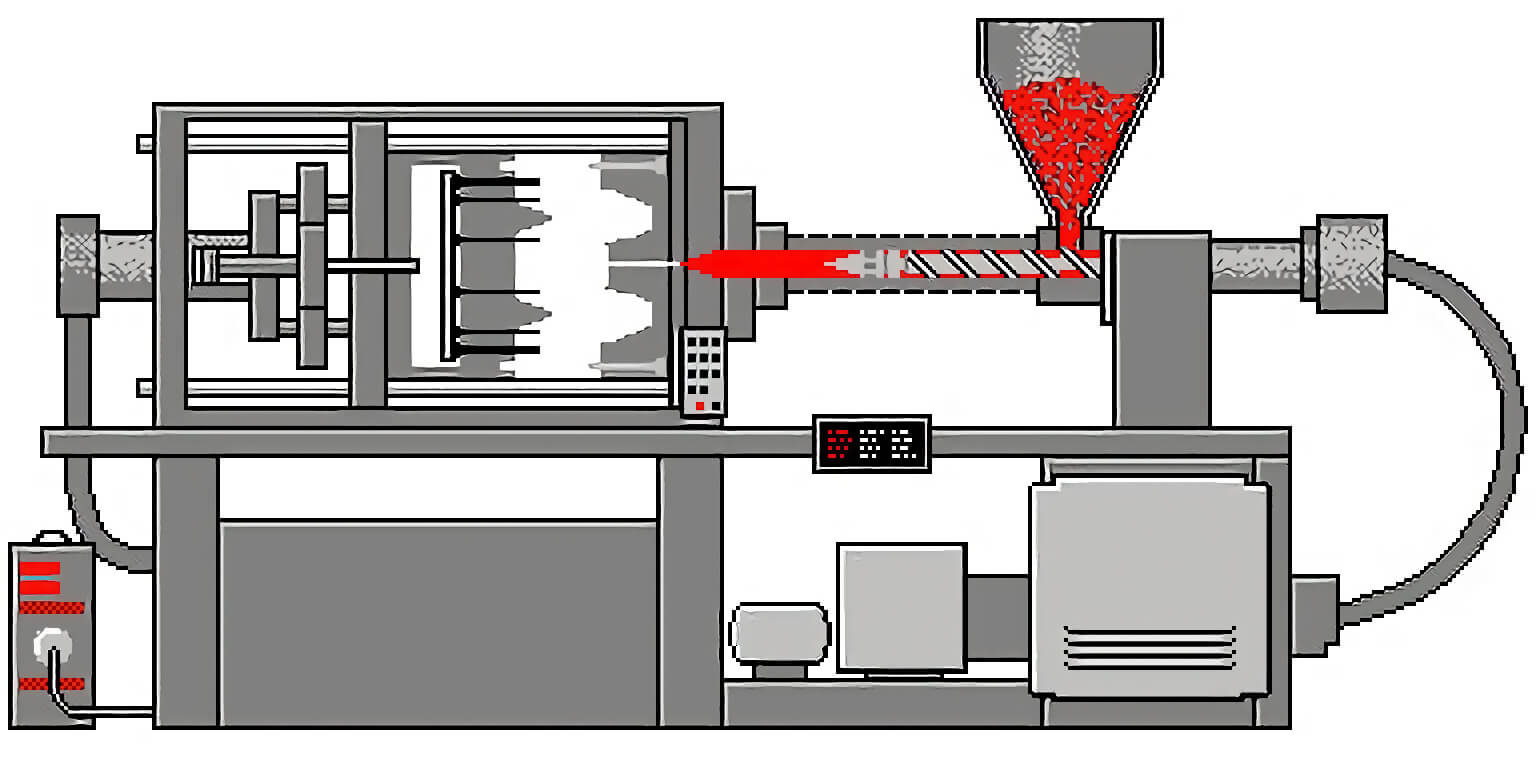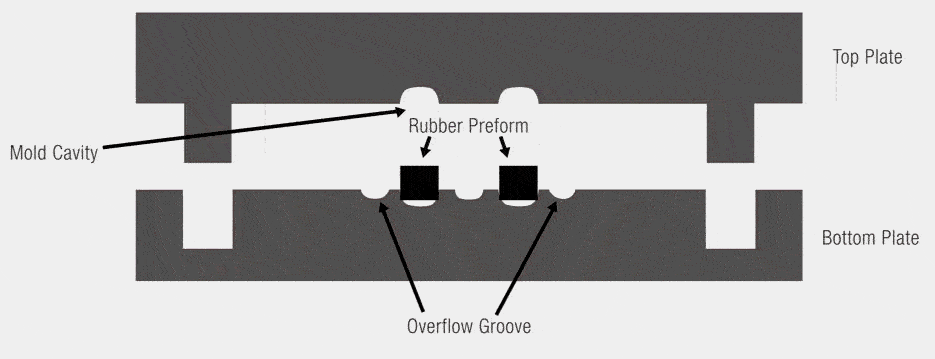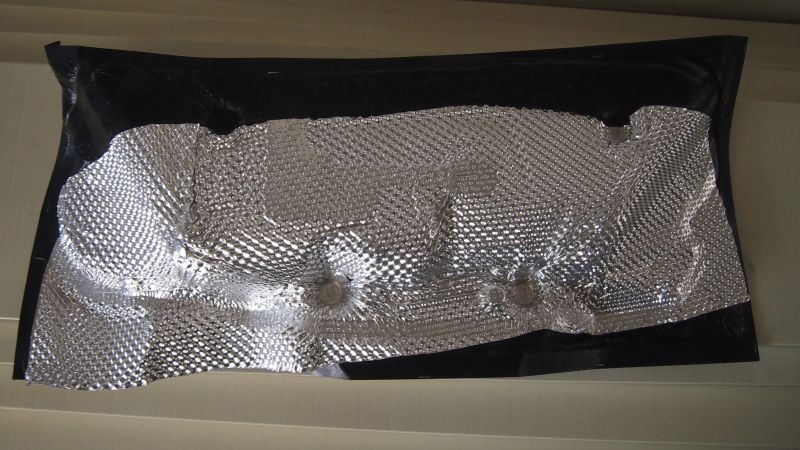
Specialize in Compression molds

Specialize in Compression molds
While thermoplastic molding has become the dominant molding process in the plastics industry, thermoset molding still occupies an important market. This complete thermoset molding guide will help you understand the thermoset molding process and help you with your thermoset molding projects.
Thermoset molding is an irreversible molding process by which malleable plastic is placed into a heated mold and formed into its final shape. Thermoset molded parts often withstand enormous vibrations, extreme temperatures, and aggressive chemical attacks. In contrast to thermoplastic molding, the thermoset molding process is accomplished through the use of special materials and very high mold temperatures (up to 500°F).
Like thermoplastics, thermosets can also be injection molded or compression molded. Each molding process has its most suitable field of application. So you must carefully weigh before purchasing a new mold: variables such as project annual output, material property requirements, part design geometry, and use of in-mold inserts.
In thermoset injection, the material is pushed into the screw and barrel from a hopper (phenolic material) or hydraulic filler (bulk molding compound/BMC material). As these thermosets pass through the screw and barrel, the glass fiber filler of the thermosets is chopped up more and further dispersed. In some applications, this practice has a positive effect, as the glass fibers are more evenly dispersed throughout the part, providing consistent part characteristics.
In addition, the thermoset injection molding process provides very fast cycle times, enabling thermoset molders to achieve higher throughput. Fields such as automotive and home appliances are suitable for the use of thermoset injection molding to produce high-volume thermoset parts. The thermoset injection molding process can save up to 50% time per shot compared to the thermoset compression molding process.
In addition, thermoset injection molding can also provide mold or product designers with greater design flexibility. Mold designers can move the parting line to improve material flow in the mold cavity to ensure optimal filling.

During the thermoset injection process, the fiberglass filler is shredded, at which point the material may lose some of its strength properties. However, material strength is the most critical performance requirement in some applications. During the thermoset compression molding process, no glass fiber fillers are shredded. And due to manual or automated placement, the glass fibers may not be uniformly dispersed. So you can place strategically so that some areas of the part are stronger than others.
In thermoset molding, the bond line is generally on the opposite side of the gate, which can cause a weak point in this area. However, the compression molding process does not require a gate and can feed directly into the mold cavity.
However, thermoset compression processes are not as suitable for high-volume projects as thermoset injection due to slower molding cycle times. The daily throughput is lower compared to the injection process.

In conclusion, you can use the following dimensions to measure whether your thermoset molding project needs injection molding or compression molding. Because of the faster cycle times and throughput of the thermoset injection process, it makes sense for projects that require high-volume part production. On the other hand, thermoset compression molding may be suitable for applications with higher strength properties, or for very large parts that cannot be injection molded using standard equipment.
MDC uses the information table below to list the advantages and disadvantages of using three molding methods - molding, transfer, and injection molding - for your reference. Each of the three molding methods has its own strengths and weaknesses. From a techno-economic point of view, injection molding is preferred for larger lot sizes. When the batch size is small, molding or transfer molding should be preferred. No, for the current popular fiber reinforced materials, we recommend you to use the molding method.
| - | Injection Molding | Compression Molding | Transfer molding |
| Molding cycle | Short | Longer | Shorter |
| Forming quality | Good | General | Good |
| Flange thickness | None or thinner | thicker | None or thinner |
| Side hole forming | Convenient | inconvenient | Convenient |
| Insert Placement | Inconvenient | more convenient | Convenient |
| Mechanization and automation | Easy to achieve | Not easy to achieve | Not easy to achieve |
| Raw material consumption | High | low | High |
| Product warpage | Large | Smaller | Large |
| Molding shrinkage | Large | Small | Large |
| Long Fiber Plastics | Cannot be shaped | Can be molded | Can be shaped |
| Mold Construction | Complicated | Simpler | Complex |
Thermosets are generally stronger than thermoplastics because catalysts added to the base compound cause chemical reactions at the molecular level to form a harder, irreversible final form. Thermosets cannot be remelted and can only be ground and recycled as filler for different applications. The advantages of thermoset molding are as follows:

MDC is a custom thermoset mold manufacturer specializing in thermoset injection molding of phenolic resins, bulk molding compounds (BMC), epoxies, and DAP. Our customers rely on MDC's expertise in thermoset forming.
MDC has extensive experience in thermoset molding, producing thermally stable components that remain dimensionally stable even at high operating temperatures, providing molding services for a variety of customers and product end markets, including products exposed to oils, and liquids, salts, and moisture application.
Whether your product is completely new to the market or an existing metal or thermoplastic material conversion, MDC can explore thermoset molding to help you reduce costs, reduce the number of parts in an assembly, reduce final product weight and improve product performance.
No matter what industry you are in, MDC offers best-in-class thermoset molding solutions at affordable prices. If you would like to learn more about thermoset injection molding or compression molding, please contact our team and request a quote today!
Contact US
Email: master@zjmdc.com
Tel: +86 576 84616076
Fax: +86 576 84616079
Mobile: +86 13906573507(Mr. Wang)
Address: No.116 mochuang road, Huangyan Xinqian street,Taizhou,Zhejiang,China